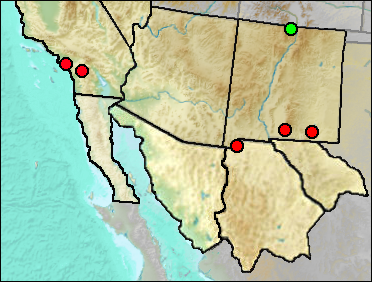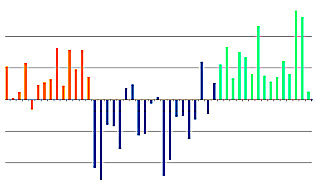Class Mammalia
Order Rodentia
Family Cricetidae
Subfamily Neotominae
Genus Peromyscus

Canyon Mice are strongly associated with rocky areas, but within such areas have been taken from Creosotebush desert to lower montane forest (Johnson and Armstrong 1987). It is a Great Basin form that barely enters New Mexico in the Four Corners region, occurs across northern Arizona and in the arid regions of Nevada and southeastern California south to the Gulf of California and Baja California. In view of the number of taxa that entered the New Mexican region from the northwest during the late Pleistocene (Harris 1989), the Canyon Mouse would not be unexpected in glacial-age deposits of New Mexico. The dilemma is that character states of the lower jaw overlap broadly with those of P. maniculatus, the Deer Mouse, leaving a number of specimens in identification limbo. Nonetheless, a number of specimens from New Mexico lie beyond the range of P. maniculatus in the results of discriminant analyses, leaving little doubt that this mouse was widely distributed (Fig. 1).

Fig. 1. Results of discriminant analysis between P. crinitus and P. maniculatus. Bars above the central line are identified as P. crinitus, those below as P. maniculatus. Orange bars represent the modern sample of P. crinitus, blue bars the modern sample of P. maniculatus, and green bars fossil P. crinitus.
As is apparent in Fig. 1, a degree of subjectivity is involved with some specimens. Although some fossils clearly exceed the discriminant function of any specimen of P. maniculatus, others do not. Ignoring the P. maniculatus outlier, only one specimen (that on the far right) lies below the extremes of the other four misidentified, modern P. maniculatus, and that specimen is from the same stratum as a strongly identified P. crinitus. All UTEP localities listed in the sites section except Room of the Vanishing Floor and Camel Room have one or more specimens beyond the range of the P. maniculatus sample.
Sites.
Medial Irvingtonian: SAM Cave (Rogers et al. 2000: cf.).
Sangamon: Newport Bay Mesa (Jefferson 1991b: cf.).
Early/Mid Wisconsin: Room of the Vanishing Floor (UTEP: cf.).
Mid Wisconsin: Pendejo Cave, Zone N (UTEP).
Mid/Late Wisconsin: Diamond Valley (Springer et al. 2009: cf.).
Late Wisconsin: Camel Room (UTEP: cf.); U-Bar Cave (UTEP, 15-18 kya); Harris Pocket (UTEP; Harris 1970a).
Rejected. Late Wisconsin: Bison Chamber (Harris 1970a).
Literature. Harris 1970a, 1989; Johnson and Armstrong 1987; Rogers et al. 2000; Springer et al. 2009.
Last Update: 17 Mar 2014